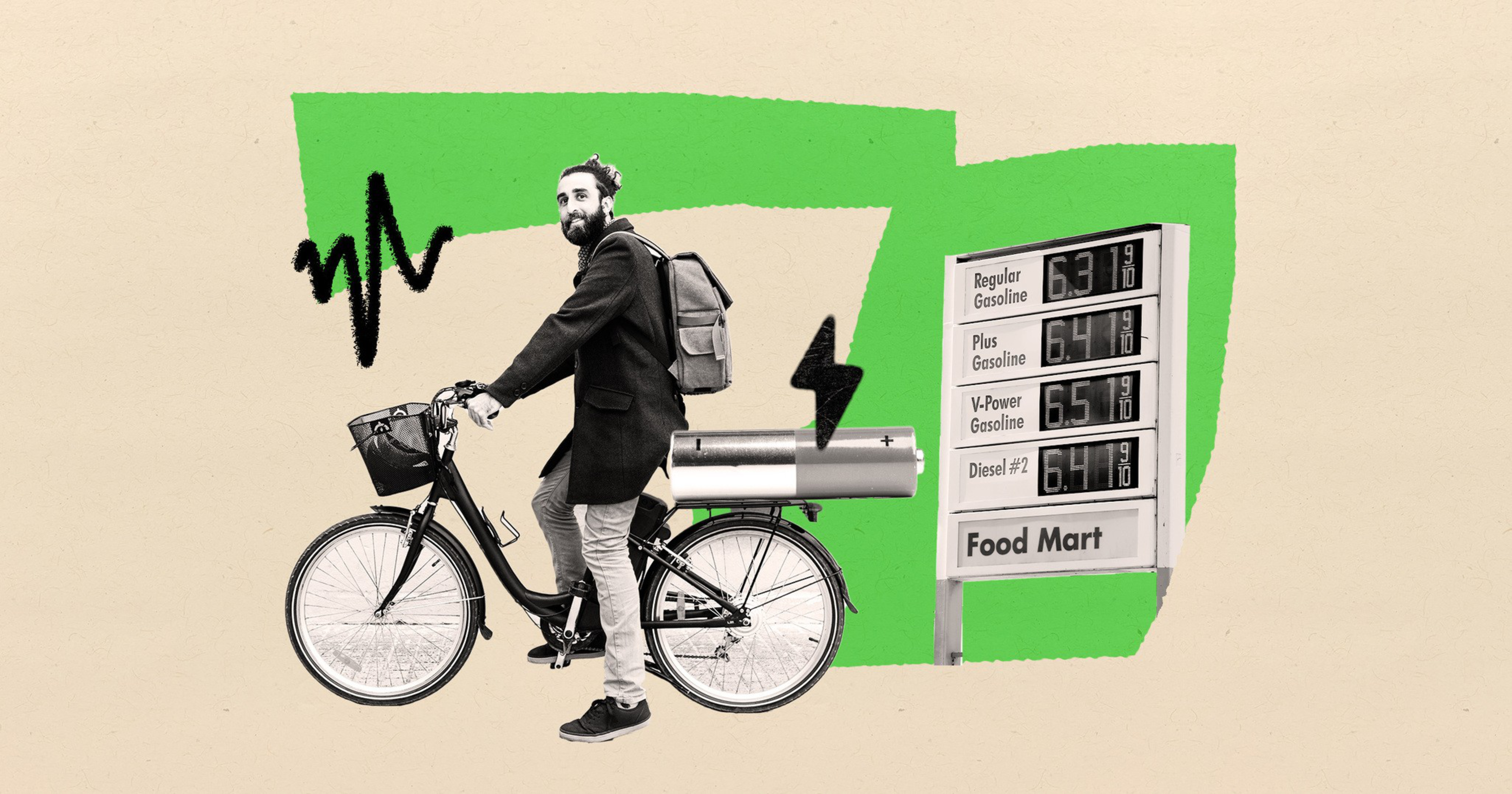Brett Thurber is a co-owner of The New Wheel, an e-bike shop in Bernal Heights and Larkspur.
Recently, the staff at The New Wheel, an electric bike shop in Bernal Heights that I co-founded, posted a video (opens in new tab) showing a member of our team riding an electric bike past a 76 station that was charging drivers $6 per gallon. A customer commented that he can charge both his e-bikes—a cargo bike and commuter bike—for only $0.17. That $0.17, which would get a car approximately one mile even at 35 miles per gallon, would power an e-bike an impressive 60 miles—with two kids, no traffic slow-downs, no parking hassles and lots of fun.
Spiraling fuel costs are only the latest reason why more and more people are choosing to ditch their cars and buy an electric bike instead. Yet in spite of some significant progress during the pandemic, the policy realm has been challenged to keep up with the growth in cycling specifically—and light-electric vehicles more generally. California offers extensive rebates for electric cars (opens in new tab), but there are no tax credits for e-bikes—even though the use of precious resources like electricity and lithium-ion batteries are more than 30 times as efficient on a bike (opens in new tab) than in a car (opens in new tab). Gas prices in California are not going down anytime soon (opens in new tab), and San Francisco should recognize this reality and offer incentives to encourage this green, family-friendly alternative.
This cycling revolution has been brewing for some time now. In July 2010, I flew up Russian Hill on my first e-bike and immediately realized that it was going to revolutionize how people get around San Francisco, a city whose hilly residential neighborhoods can be daunting for traditional bikes.
And it’s true: E-bikes have already changed the way so many people move around our city. Stop by a morning school drop-off, stroll down a Slow Street, or sip coffee on Valencia, and you will witness the profound mode-shift that is underway. E-bikes now outsell e-cars in the United States (opens in new tab), and San Francisco is ground zero for mass adoption. Our electric-bike shop has grown from three employees 10 years ago to 35 today. E-bikes are not just a toy; they are transportation.
Until now, the momentum behind the e-bike revolution has been largely market-driven: E-bikes have gotten better, sleeker, more fun and are increasingly feature-rich. For instance, you can now ride all day on a charge, lock your bike via an app, measure your fitness while you spin across town and cruise to work in your slacks with a chainless transmission.
E-bikes are also readily available in all shapes, sizes and configurations. There are cargo bikes for families and businesses, folding bikes for commuters, mountain and road bikes for fitness and fun, and three-wheeled bikes for those who need a balance aid. On the customer side, there is a real need. Regular people from all walks of life—some of them veteran cyclists, but most of them new to cycling—come into our store every day looking for transportation solutions that will solve what has become an environment of automobile entrapment and inadequate affordable transportation.
The pandemic was another huge boost. Many people discovered cycling as the perfect safe, socially distanced activity. And perhaps most importantly of all, the pandemic brought the advent of a network of Slow Streets where cars are encouraged not to drive or to drive slowly, and car-free streets such as JFK Promenade (opens in new tab) and the Great Walkway (opens in new tab). As communities in Asia and Europe have already discovered, safe places to ride are the surest method to bring out a whole new group of people who otherwise wouldn’t consider it acceptable or safe to cycle.
The constituency of car-lite or car-free citizens is growing, but our political leaders have been far too slow to catch on and bolster it. There are opportunities to take on the cause and do the work of implementing the infrastructure needed to bring cycling to its optimistic reality. Instead, our city and our state have continued to paint bike lanes here and there that tell cyclists where to ride but don’t do much to keep them safe.
Some blocks have received parking-protected bike lanes (yay!) due to being high-injury corridors (boo!). And when it comes to bicycle parking, San Francisco is light years behind modern cities (opens in new tab), and the lack of infrastructure in its own public garages and the Transit Terminal sends an unfortunate signal that bicycle transportation is the exception, not the rule.
The next phase of the e-bike revolution will require vision. To welcome the growing number of cyclists, we need car-free networks that allow a 5-year-old and an 85-year-old to cross the whole city on their bikes. We need government-sponsored car buyback programs, with funds deposited to Clipper Cards and e-bike gift certificates. We need those Clipper Cards to pay for inexpensive rides on a municipal bike-share program, not subsidize the costlier Lyft (opens in new tab) Bay Wheels We need secure, on-street bicycle garages that allow people who live in apartments to store their electric bikes and cargo bikes safely.
The old days of climate concern coupled with minimal action are gone. Even Exxon acknowledges the need to decarbonize (opens in new tab). Unless we commit to fracking and surrender to catastrophic climate change, we can’t go back to the way things were before when gas was comparatively—but artificially (opens in new tab)—cheap.
Why would we want to, anyway? The market has helped build a constituency of people who know that cycling is better than driving, and the market will bring the next wave of cyclists safe, vehicular-quality e-bikes. We have glimpsed the future and seen how wonderful human-scale transportation, clean air and healthy communities can be. It’s time to get political and show that San Francisco is the city that knows how.
